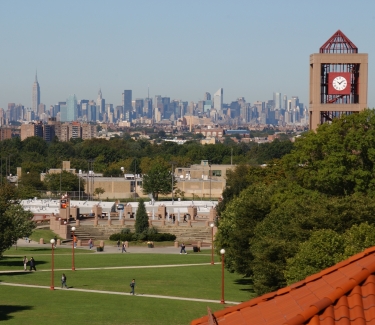Throughout history, the world’s great cities have been hubs of innovation and creativity. From the earliest communities through modern day, cities have been built by and for a great variety of societies. Additionally, universities prove to be inherently stable organizations even during times of economic downturn. This stability makes universities useful institutions around which to develop economic strategies; city leaders can rely on the financial steadiness of universities even during poor economic situations (Goddard et al., 2014). Future research can help the field better understand the various ways large metropolitan cities and universities interact as mitigated by history, context, and culture. This information will not only improve practice and policy, but also expand the understanding of the role of universities in supporting the social and economic development of cities.

Higher education policy is inherently jurisdictional.
The Center for American Progress and the Institute for Higher Education Policy identify 44 metropolitan areas that cross state boundaries and account for 29% of national gross domestic product and 67.5 million people (Sponsler, Kienzl, & Wesaw, 2010). The considerable research focus on state level policy is understandable given that much of the funding to higher education comes from these governments.
However, the economic, political, and social significance of multistate metropolitan areas and large cities more generally suggests the need to more adequately examine the higher education issues in these contexts.
Existing research demonstrates the power and potential of higher education to help grow and develop major metropolitan city-regions (Abel & Deitz, 2011b; Anselin et al., 1997; Beck et al., 1995; Benneworth & Hospers, 2007; P. Chatterton & Goddard, 2003; Elliott et al., 1988; Feldman, 1994; Pellenbarg, 2005; Stokes & Coomes, 1998).
The linkages between institutions and their communities run deep and will likely continue to develop with the changes resulting from the knowledge economy. Research suggests universities have impacts on their cities and hold potential value as anchor institutions, which warrant additional scholarship to better understand the ways universities and anchor institutions may operate and support a city’s social and economic development.
In particular, by examining the influence of place and geography studies of the anchor institutions could provide additional insights into the complex and major issues facing contemporary higher education including college completion, vocational training, innovation, accountability, and funding.
Although there is considerable variation in the quality and confidence in the claims of the potential of universities to serve as anchor institutions, the majority of the research suggests that universities have substantial impacts on their cities. The complexity of city-university interactions presents theoretical and methodological challenges that scholars will need to address in order to more fully develop our understanding of these issues.
The challenges and issues related to the local and global trend of escalating urbanicity only increases the need to better understand how cities and higher education interact. There is certainly sufficient evidence of the benefits of higher education to cities to warrant a sustained research agenda on the economic and social impacts of universities serving as anchor institutions.
Higher education research often fails to substantially consider questions related to the importance of place and geography. Local policies influence the environment of higher education institutions and should be given greater attention by higher education researchers.
We need a sustained line of inquiry that explores higher education issues within the context of cities as well as exploring the work of universities serving as anchor institutions.

